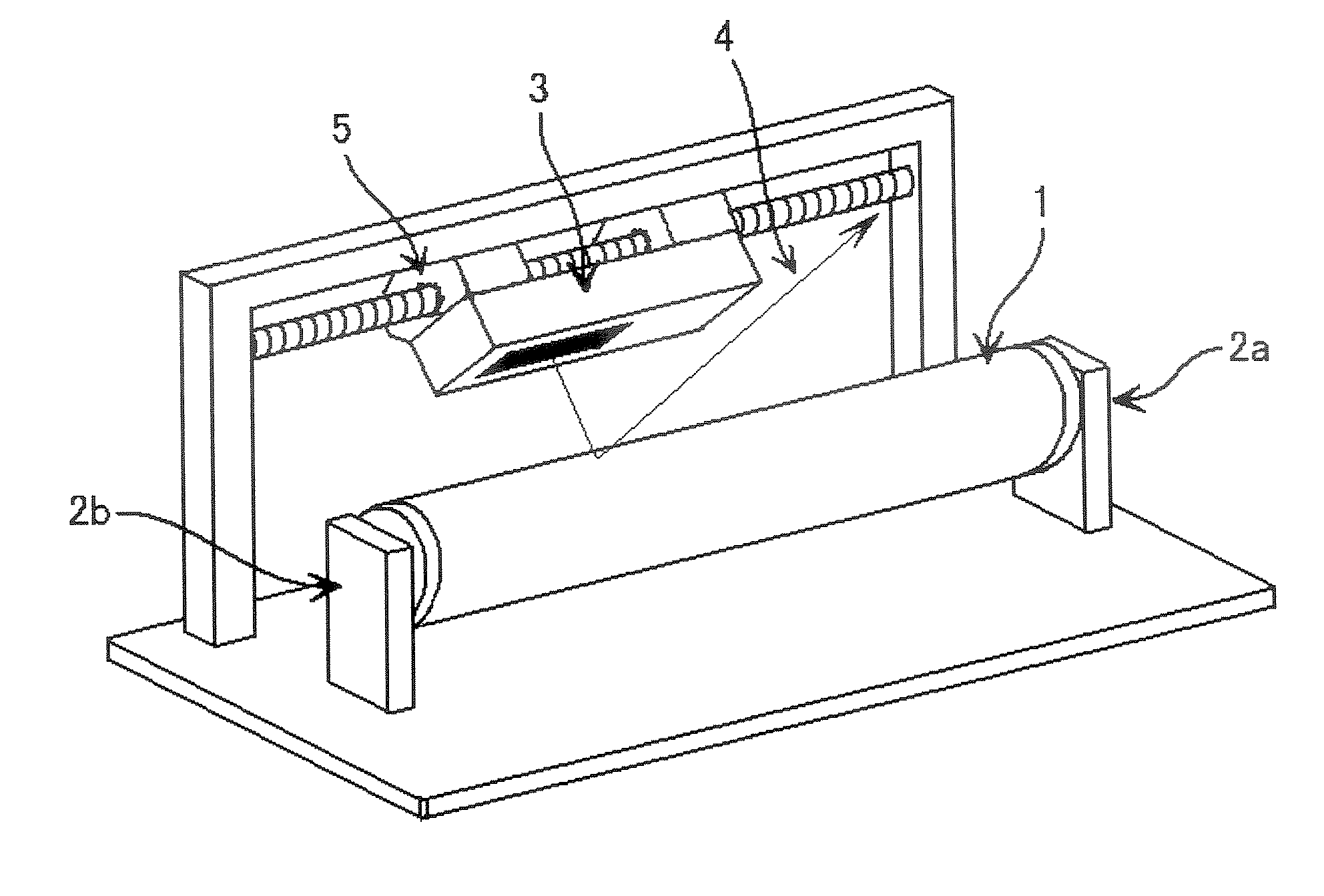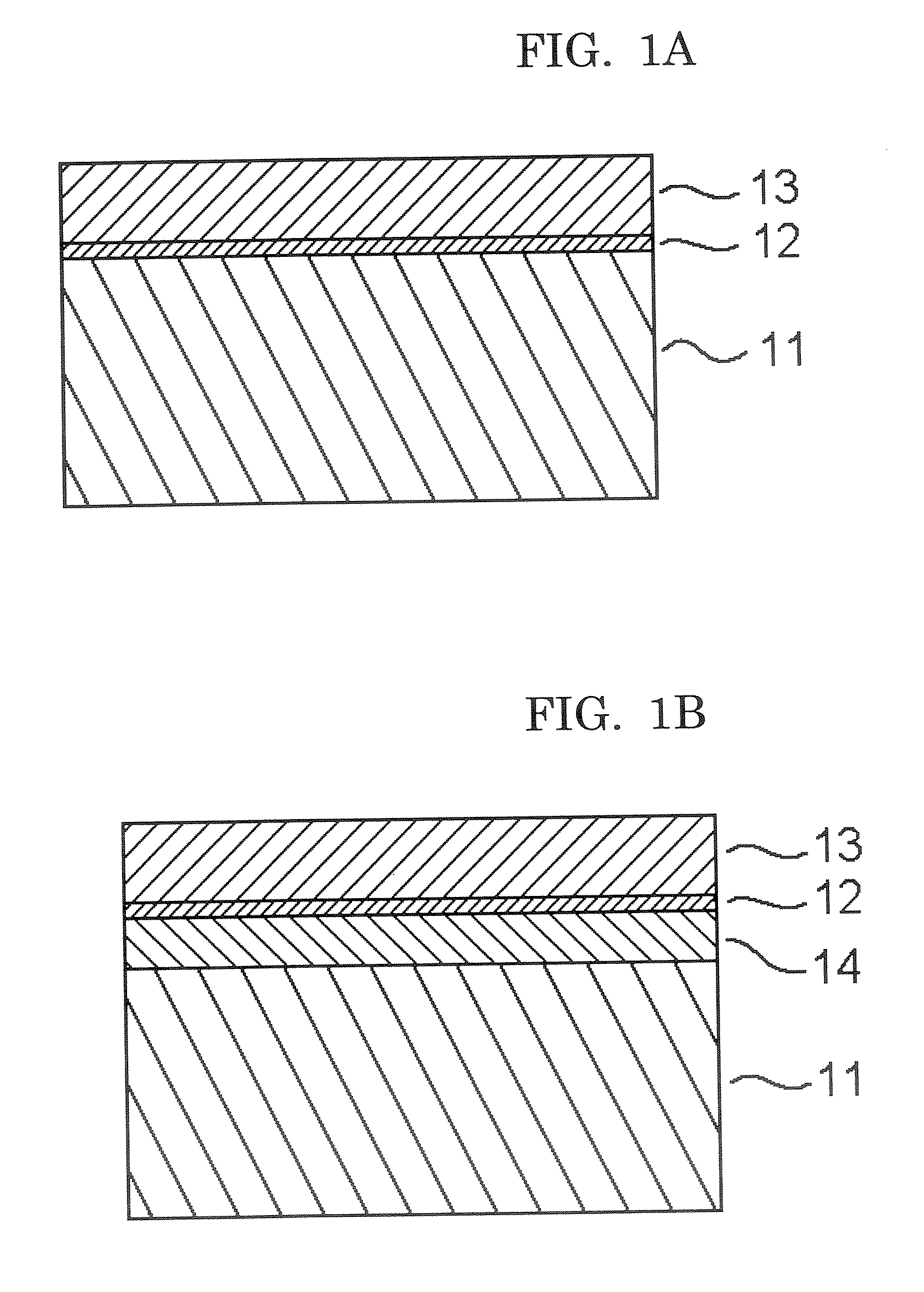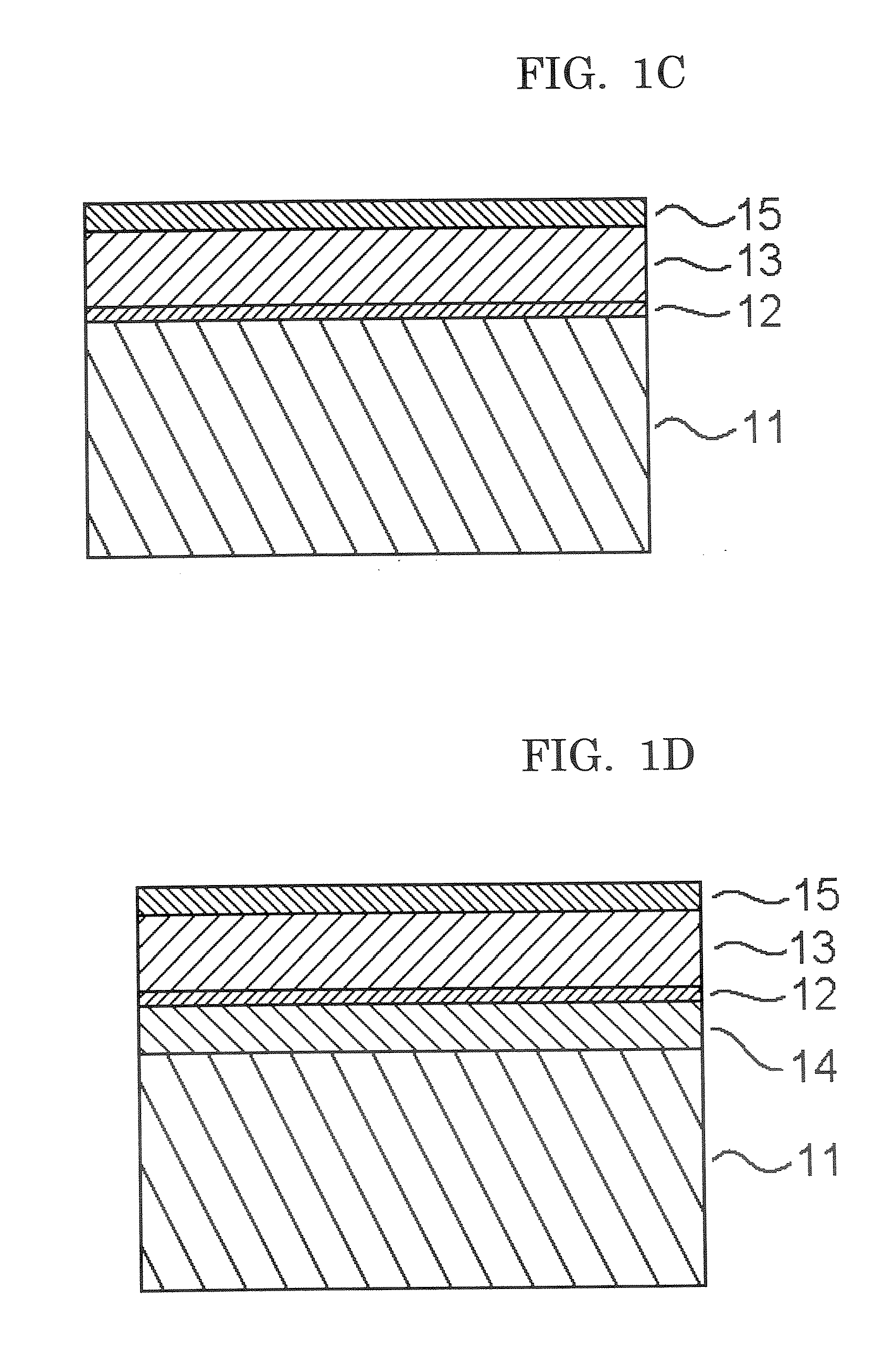Method for evaluating electrophotographic photoconductor and the evaluation device, and method for reusing electrophotographic photoconductor
a photoconductor and evaluation device technology, applied in the direction of electrographic process, instruments, corona discharge, etc., can solve the problems of difficult to detect correctly the filming occurrence, the likelihood of so-called “filming phenomena” occurring, and the difficulty of initial filming or slight filming to be found. , to achieve the effect of accurately evaluating initial filmings
- Summary
- Abstract
- Description
- Claims
- Application Information
AI Technical Summary
Benefits of technology
Problems solved by technology
Method used
Image
Examples
first embodiment
[0244]FIG. 15 A shows a configuration where a charge generating layer 12 that contains a charge generating substance and an optional binder resin and a charge transport layer 13 that contains a charge transport substance and a binder resin are laminated in this order on a support 11. Slight and shallow flaws have generated on the surface 13 of the electrophotographic photoconductor in the circumferential direction through 1000 or more sheets of imaging. The flaws are mainly caused by contact with a cleaning blade or cleaning brush; the ten-point average surface roughness (Rz) is no more than 0.1 μm by use of the surface roughness meter in accordance with JIS B0601-1994.
[0245]FIG. 16A is a conceptual view that shows a principal to irradiate UV rays with a wavelength of 200 to 420 nm onto the surface of the electrophotographic photoconductor shown in FIG. 15A and to measure a fluctuation of fluorescence emitted by the electrophotographic photoconductor. Slight and shallow flaws have ...
second embodiment
[0247]FIG. 15 B shows a configuration where an undercoat layer 14 is formed on a support 11, and a charge generating layer 12 that contains a charge generating substance and an optional binder resin and a charge transport layer 13 that contains mainly a charge transport substance and a binder resin are laminated in this order on the undercoat layer. Slight and shallow flaws have generated on the surface of the charge transport layer 13 in the circumferential direction of the electrophotographic photoconductor through 1000 or more sheets of imaging. The flaws are mainly caused by contact with a cleaning blade or cleaning brush; the ten-point average surface roughness (Rz) is no more than 0.1 μm by use of the surface roughness meter in accordance with JIS B0601-1994.
[0248]FIG. 16B is a conceptual view that shows a principal to irradiate UV rays with a wavelength of 200 to 420 nm onto the surface of the electrophotographic photoconductor shown in FIG. 15B and to measure a fluctuation ...
third embodiment
[0250]FIG. 15 C shows a configuration where a charge generating layer 12 that contains a charge generating substance and an optional binder resin, a charge transport layer 13 that contains a charge transport substance and a binder resin, and a protective layer 15 are laminated in this order. In the electrophotographic photoconductor, slight and shallow flaws have generated on the surface of the protective layer 15 in the circumferential direction of the electrophotographic photoconductor through 1000 or more sheets of imaging. The flaws are mainly caused by contact with a cleaning blade or cleaning brush; the ten-point average surface roughness (Rz) is no more than 0.1 μn by use of the surface roughness meter in accordance with JIS B0601-1994.
[0251]FIG. 16C is a conceptual view that shows a principal to irradiate UV rays with a wavelength of 200 to 420 nm onto the surface of the electrophotographic photoconductor shown in FIG. 15C and to measure a fluctuation of fluorescence emitte...
PUM
 Login to View More
Login to View More Abstract
Description
Claims
Application Information
 Login to View More
Login to View More - R&D
- Intellectual Property
- Life Sciences
- Materials
- Tech Scout
- Unparalleled Data Quality
- Higher Quality Content
- 60% Fewer Hallucinations
Browse by: Latest US Patents, China's latest patents, Technical Efficacy Thesaurus, Application Domain, Technology Topic, Popular Technical Reports.
© 2025 PatSnap. All rights reserved.Legal|Privacy policy|Modern Slavery Act Transparency Statement|Sitemap|About US| Contact US: help@patsnap.com



